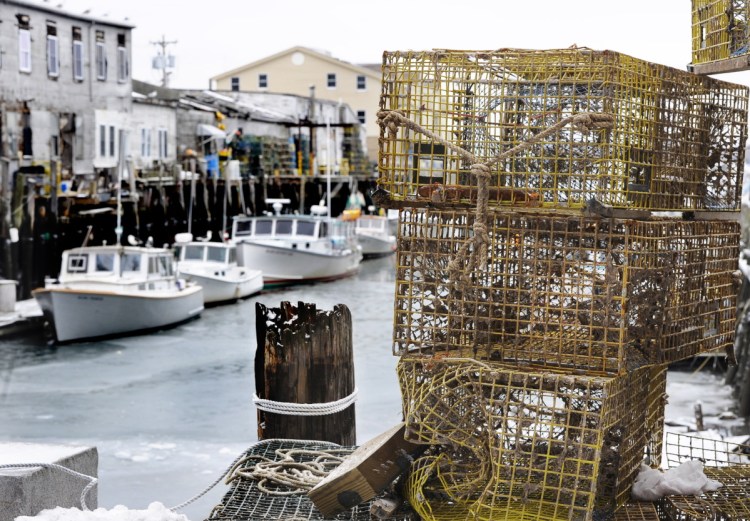There is an economic principle that’s usually attributed to Herbert Stein, who worked for the Nixon administration and The Wall Street Journal.
Stein’s law: If something can’t keep going forever, it won’t.
Maine’s lobster industry is near the peak of a historic boom, making it the state’s most lucrative fishery. In the last 30 years, lobster landings have increased from 20 million pounds a year to 130 million. No one expects the catch to keep growing forever. The question is not whether it will decline, but when.
Scientists from the Gulf of Maine Research Institute, the University of Maine and the National Oceanic and Atmospheric Administration have applied computer modeling to that question and have proposed an answer. In a report issued last month, they identified 2014 as the peak of the lobster population and predicted a long, slow decline of 40 to 62 percent by 2030, with the catch returning to levels in line with what was seen in the 1990s.
The Maine Department of Marine Resources has disputed the study and questioned the value of its computer models. Since no one was able to predict the historic rise in the lobster population, Commissioner Patrick Keliher said, he doubts the ability of scientists to accurately predict their decline.
He’s right, but there is plenty of reason to take this report seriously and use it as a planning tool. There’s a lot we can’t know about the future, but what we know about what’s happening in the present supports the report’s predictions.
Carbon pollution created by human activity is making the planet warmer, and few places on Earth are warming faster than the Gulf of Maine. Water temperature plays a well-established if not completely understood role in lobster population growth. Maine lobster harvesters have documented the warming temperatures here, and have witnessed the species’ disappearance from even warmer waters like Long Island Sound and Massachusetts Bay, where they used to be plentiful.
The most prolific lobster fishing grounds in Maine waters have shifted north and east in a generation, from Casco Bay to Stonington. In another generation, it could move away from the coast of Maine entirely.
A 30-year decline in the harvest to the 2000 level should not be of concern to mid-career lobstermen, but it’s something they should think about if they imagine their children will take over the family business.
If the models are correct, fewer lobsters will mean less work for lobstermen, and more pressure on them to diversify their catch. The warmer water might not be all bad news: There are already species of fish being caught in Maine waters that had never been seen this far north, and they may become plentiful.
The study also documented how Maine lobstermen’s self-imposed conservation measures, like throwing back oversized lobsters and females with eggs, has contributed to the boom and will soften the decline. Global efforts by governments and industries to reduce emissions of greenhouse gases could also affect ocean temperatures off Maine.
But while the industry is still enjoying this historic peak, it makes sense for the state to remember Stein’s law, and get serious about planning for what’s next.
This lobster boom can’t keep going forever, so it’s right to assume that it won’t.
Send questions/comments to the editors.



Comments are no longer available on this story